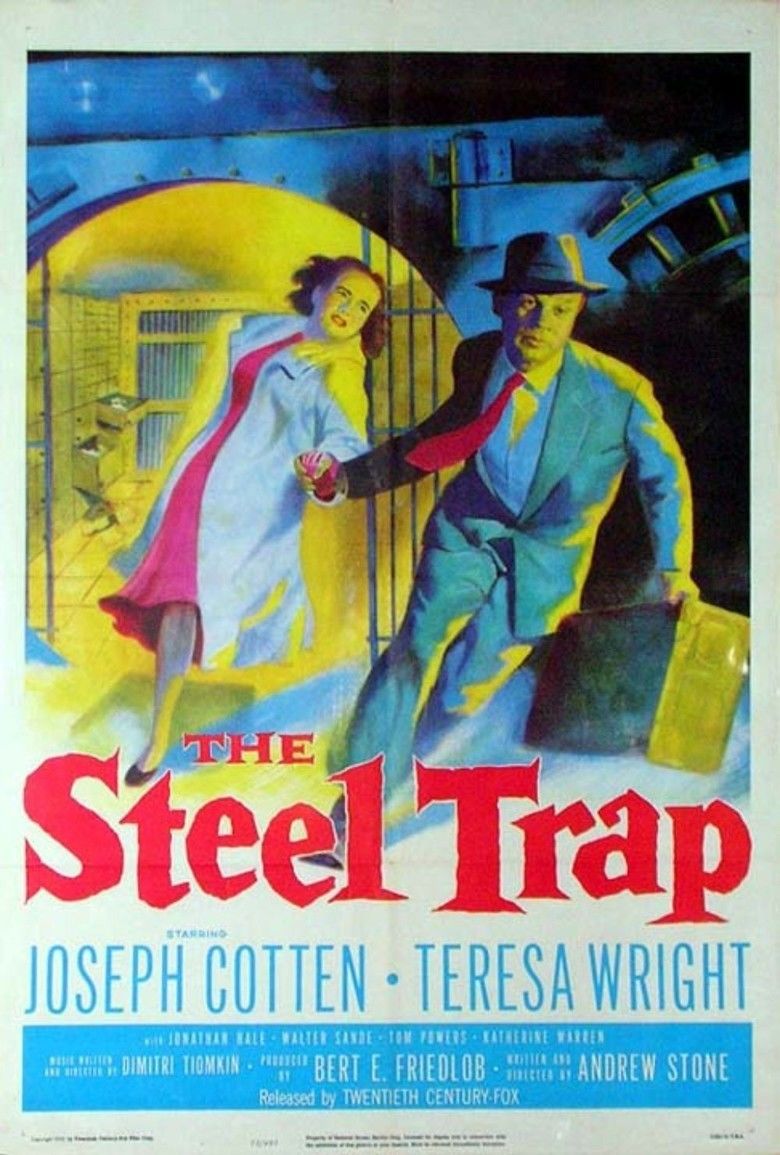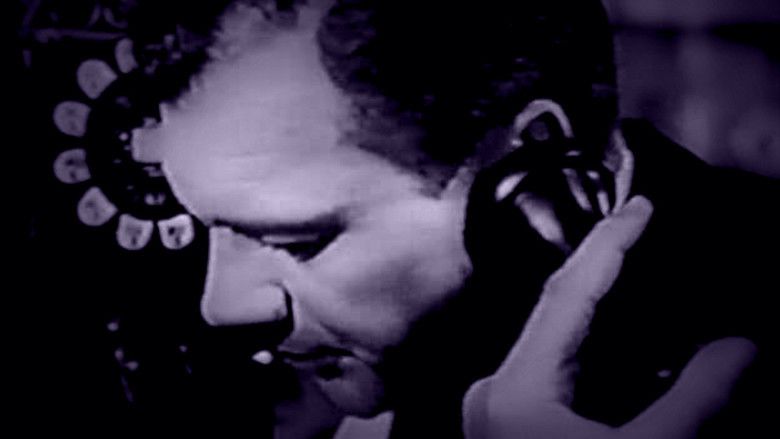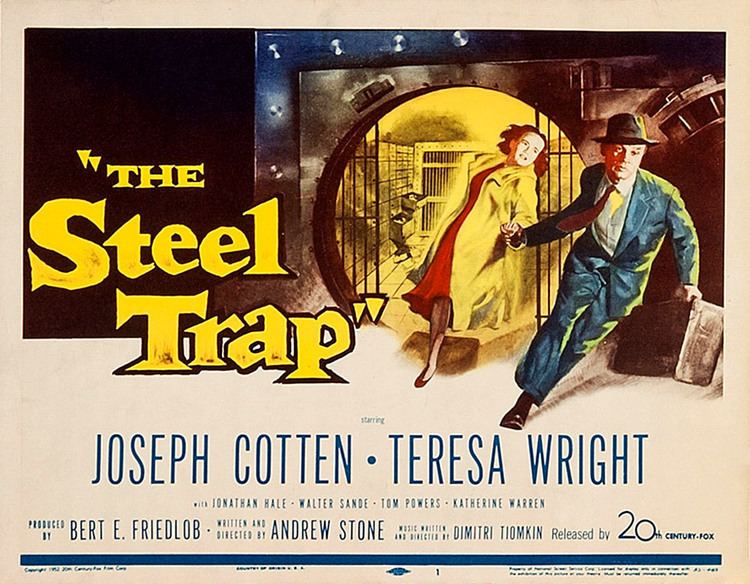The Steel Trap
7.2 /10 1 Votes7.2
Country United States | 7/10 IMDb Duration Language English | |||||||||||||||||||||||||||||||||
 | ||||||||||||||||||||||||||||||||||
Release date November 12, 1952 (1952-11-12) (United States) Tagline For the Love of a Woman, He Stole $1,000,000! | ||||||||||||||||||||||||||||||||||
The Steel Trap is a 1952 thriller film noir written and directed by Andrew L. Stone, and starring Joseph Cotten and Teresa Wright.
Contents

Joseph Cotten plays a assistant bank manager who steals $500,000 from the safe late on a Friday. His plans to flee to Brazil are hampered after he does get away with the money as planned.
Plot

With a million dollars cash in the vault, Jim Osborne (Joseph Cotten), an assistant bank manager in Los Angeles, is tempted to steal from his own bank and flee the country. Doing research at the library, he learns that Brazil does not have an extradition treaty with the United States. If he steals the money at close of business on a Friday, he will have time to travel to Brazil before the theft is even discovered. But the season when the bank opens on Saturdays is about to begin, so he must take action the same week or else wait for months.
He tells his wife Laurie (Teresa Wright) that the bank is sending him to Rio de Janeiro on business and he wants her and their daughter to travel with him. It is a great opportunity for his career, he says, and he has been given it in preference to the person who would normally be sent, so he cautions her not to talk to anyone about it. Laurie is delighted with the news, but insists their daughter stay at home with Lauries mother. Jim decides he can send for her after Laurie knows they are staying in Rio.
With his inside knowledge and trusted position, the theft from the bank vault is simple enough, but the travel logistics are difficult. Flights are full, passports and visas are needed on a rush basis, and the Osbornes face a series of delays and miss a connection at New Orleans. At this point, an airline employee made suspicious by Jims urgent manner and very heavy baggage tips off a customs officer to check whether he is illegally exporting gold, and the money is revealed.
Unreported large cash transactions are legal in 1952, but the customs man knows it is not at all normal for a bank to send only a single employee with so much cash. Though he suspects some wrongdoing, he cannot reach Jims boss by telephone before the Osbornes flight is called, and there is no customs violation, so he lets them go. However, they are on standby and the flight is already full. They will not be able to reach Rio on Sunday.
Now fearing arrest, Jim checks into a hotel using a false name. Laurie overhears this, realizes the truth, and confronts him. When he admits what he has done, she wants no part in it; she flies back to Los Angeles.
Within hours, Jim realizes that his wife and daughter are far more important to him than his dreams of wealth. Fortunately, it may still be possible to save the situation. Laurie is too upset to tell anyone why she had suddenly returned, and Jim has used his own money for their travel expenses, so the banks money is intact. After phoning his wife, Jim flies back and just manages to replace the money before it is missed.
Cast
Background
This was the second time that Cotten and Wright starred in a film together, following Hitchcocks Shadow of a Doubt (1943), where she played his niece.
Cotten also starred in A Blueprint for Murder (1953), with Jean Peters and Gary Merrill, a thriller noir directed by Andrew L. Stone as well.
Critical response
When the film was released, film critic Bosley Crowther, praised the film, writing, "The Steel Trap, which came to Loews State yesterday, is a straight exercise in the build-up of cold, agonizing suspense ... As a purely contrived generation of runaway anxiety, this little melodrama amounts to a skillful and no-lost-motion job—so long as the innocent observer doesnt stop to think and check up. ... Indeed, its an entertaining picture—the entertainment, however, being of the sort enjoyed by the man who hit himself on the head with a hammer because it felt so good when he stopped."
Variety magazine said of the film, "Andrew Stone’s direction of his own story emphasizes suspense that is leavened with welcome chuckles of relief in telling the improbable but entertaining events."
References
The Steel Trap WikipediaThe Steel Trap IMDb The Steel Trap themoviedb.org
